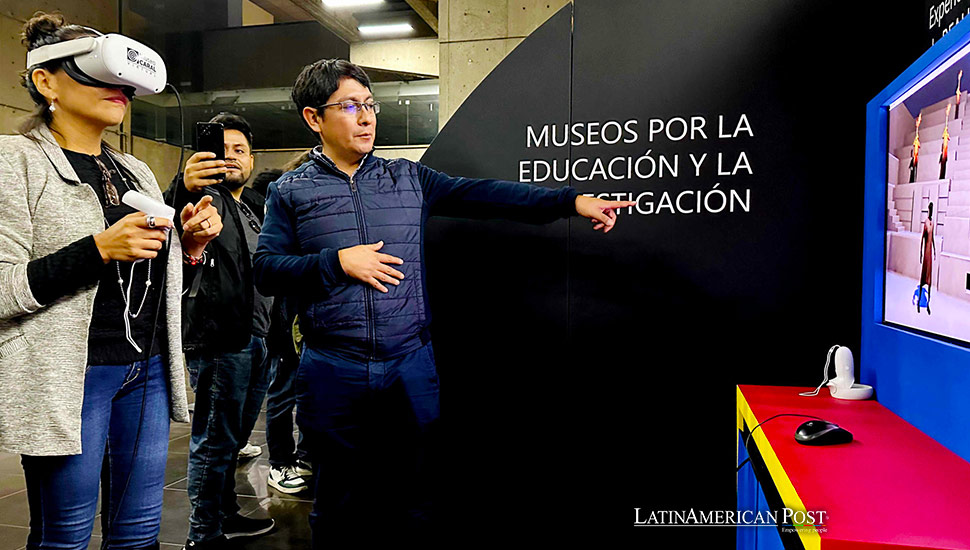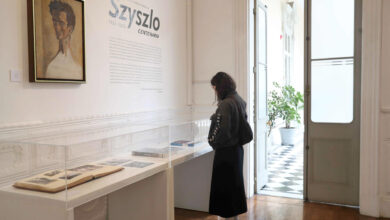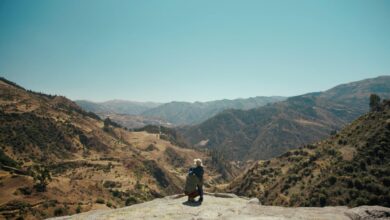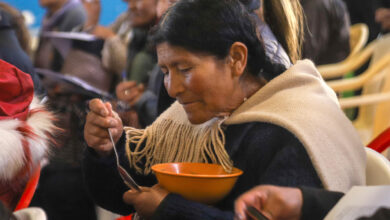Peruvian Mobile App Reveals Secrets of Caral, America’s Oldest Civilization

Peru’s Ministry of Culture has launched a mobile app and virtual reality experience to explore the Caral civilization. These digital tools offer immersive insights into America’s oldest known civilization, enhancing engagement with this ancient heritage.
On the occasion of International Museum Day, celebrated this past Saturday, Peru’s Ministry of Culture announced an innovative project to bring the history of the Caral civilization, America’s oldest known civilization, closer to the public through modern technology. Shady Solís, director of the Caral Archaeological Zone (ZAC), and Minister of Culture Leslie Urteaga presented a mobile application and virtual reality glasses designed to provide an immersive experience of the Caral archaeological site. These digital tools promise to revolutionize people’s engagement with Peru’s ancient cultural heritage.
Discovering the Caral Civilization
The Caral civilization, which thrived around 2600 BCE to 2000 BCE, predates the Inca Empire by several millennia. Situated in the Supe Valley, approximately 200 kilometers north of Lima, Caral is celebrated for its advanced urban planning, sophisticated agricultural techniques, and monumental architecture. The Sacred City of Caral, a UNESCO World Heritage Site since 2009, is often called the cradle of civilization in the Americas due to its significant contributions to early Andean culture.
The mobile application, aptly named “Caral Perú,” offers a 360-degree interactive experience, allowing users to explore the ancient city’s most significant archaeological artifacts and urban centers. Through virtual and augmented reality, users can access sacred spaces and appreciate the intricate murals of ceremonial halls in Vichama, an agropesquera (agriculture and fishing) city in Végueta-Huaura. Notable murals include the Mural of Fertility and the Hall of the Humanized Toad.
In addition to the mobile application, virtual reality glasses available at the Caral Museum provide an immersive experience of the Salón Ceremonial de los Pututus, situated atop the Edificio Público Mayor in Peñico, a site associated with the Early Formative period (1800 – 1500 BCE). These glasses offer a detailed view of the ancient society’s daily life, including their pyramidal structures, clothing, customs, worldview, and rituals.
Enhancing Public Engagement
Shady Solís emphasized that these virtual resources aim to convey the social history of past cultures, helping the public understand how the Andean territory was managed thousands of years ago. “The problems they faced and the solutions they found, the knowledge they produced in science and technology—these are the stories we aim to share through our digital platforms,” Solís explained.
The Ministry of Culture’s statement highlighted that these innovative resources are freely accessible and available in multiple languages, including Spanish, English, and French, to reach a broader audience. The digital tools foster a deeper appreciation and understanding of Peru’s rich cultural heritage among locals and international visitors.
Technology and Cultural Preservation
The integration of technology into the preservation and dissemination of cultural heritage is not new, but the approach taken by the Caral Archaeological Zone is particularly noteworthy. Utilizing mobile applications and virtual reality, the ZAC sets a precedent for how ancient cultures can be brought to life in the digital age. This initiative enhances educational opportunities and makes the history of Caral accessible to people who might not have the chance to visit the site in person.
The 2024 celebration of 30 years since the start of research, conservation, and dissemination efforts at the Caral civilization underscores the importance of these digital tools. The work began at the primary urban center, the Sacred City of Caral, and has expanded to include eleven other archaeological sites in the Supe and Huaura valleys. This continued effort ensures that Caral’s invaluable knowledge and cultural heritage are preserved for future generations.
Latin American Context: Preserving Ancient Civilizations
Latin America is home to numerous ancient civilizations, each with unique contributions to human history. Preserving these cultures is crucial not only for historical understanding but also for fostering national identity and pride. Countries like Mexico, Guatemala, and Peru have made significant strides in preserving their ancient heritage through traditional and modern methods.
The use of technology in cultural preservation is a growing trend across Latin America. In Mexico, for example, virtual tours of the Teotihuacan pyramids and digital reconstructions of Mayan cities have been developed to engage the public. Similarly, Guatemala has implemented virtual reality experiences to showcase the splendor of the Tikal ruins.
The Caral civilization’s significance extends beyond national borders. As one of the world’s oldest known civilizations, its study provides invaluable insights into early human society, urban planning, and social organization. The archaeological findings in Caral have challenged previous assumptions about the development of complex societies in the Americas, demonstrating that advanced civilizations existed in Peru long before the rise of the Inca Empire.
The international community has recognized Caral’s importance. UNESCO’s designation of the Sacred City of Caral as a World Heritage Site underscores its global significance. This recognition helps attract funding and support for continued research and conservation efforts, ensuring the site is preserved and studied for years.
Future Prospects and Continued Research
Introducing the Caral Perú mobile application and virtual reality glasses marks a significant milestone in preserving and disseminating Caral’s cultural heritage. These tools provide an immersive experience for users and highlight the potential for future technological innovations in archaeology.
As research continues, there is hope that further discoveries will shed light on the daily lives, social structures, and technological advancements of the Caral civilization. The ongoing work in the Supe and Huaura valleys promises to uncover more secrets of this ancient society, contributing to our understanding of early human civilization.
The launch of the Caral Perú mobile application and virtual reality glasses by the Ministry of Culture of Peru represents a significant step forward in preserving and disseminating the Caral civilization’s rich heritage. By leveraging modern technology, these tools offer an accessible and immersive way for people to connect with one of the oldest known civilizations in the Americas.
Also read: Peruvian Startup Pixed Revolutionizes Prosthetic Technology
As Peru continues to celebrate and preserve its ancient cultures, initiatives like these serve as a model for how technology can enhance our understanding of history. The efforts to make the Caral civilization’s history accessible to a global audience foster appreciation for Peru’s cultural heritage and contribute to the broader field of archaeological research.
Through continued innovation and dedication, the legacy of the Caral civilization will remain a vibrant part of human history, inspiring future generations to explore and appreciate the complexities of our ancient past.




